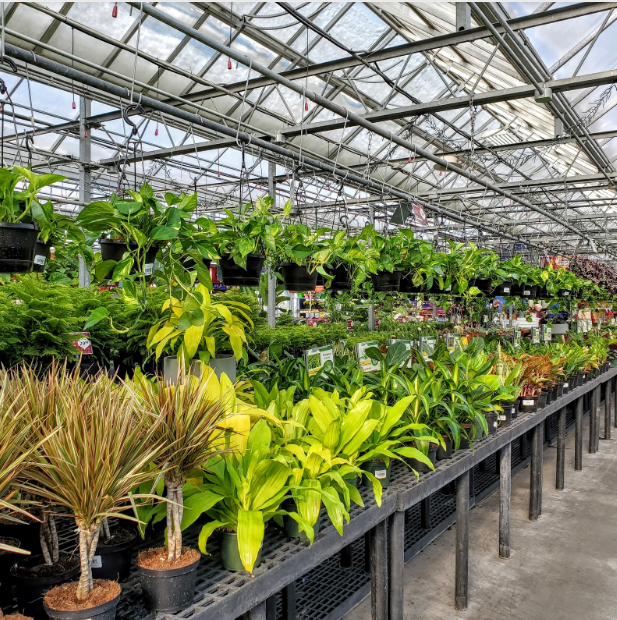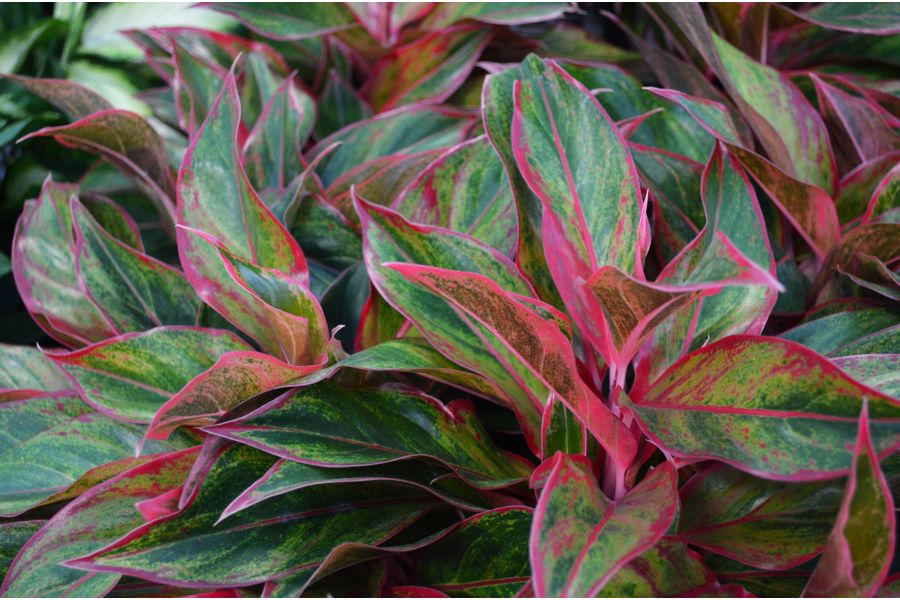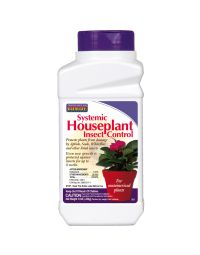Light, humidity, and temperature are essential to successful houseplant growth. Read on to learn about the right plants for the light in your home, as well as recommended temperature and humidity levels.
Light
Light affects plants in many ways. Duration, quality and intensity all play a role. Low light plants will be able to sustain themselves without supplemental lighting, but can also be grown at higher light intensities. However, plants that require higher level light may require supplemental light to prevent them from dropping leaves and becoming spindly. Light levels explained below:
• Low Light
At least 5 feet away from a window or other major light sources. Do fine in corners, hallways and on shelves.
Aspidistra (Cast Iron plant)
Adiantum (Maidenhair fern)
Epipremnum aka Scindapsus or Rhaphidophora & Pothos (Variegated Ivy)
Hedera (Ivy)
Maranta (Prayer plant)
Rhododendron (Azalea – floral)
Sansevieria (Mother-In-Law-Tongue)
• Moderate Light
At least 5-8 feet away from a window that receives some sunlight.
Calathea (Peacock plant)
Chlorophytum (Spider plant)
Dieffenbachia
Dracaena varieties (Corn plant, Madagascar dragon tree)
Ficus varieties (Fig, Rubber plant etc)
Hypoestes (Polka dot plant)
Palm varieties (Kentia, Sentry, Majesty)
Philodendron varieties
Plectranthus (Swedish ivy)
• Moderate to Bright Light
Within 3-5 feet from a window receiving 4-5 hours of sunlight. East and West windows are good choices.
Aeschynanthus (Lipstick plant)
Anthurium varieties
Araucaria (Norfolk pines)
Bromeliad varieties
Cactus varieties
Columnea (Goldfish plants)
Euphorbia (Poinsettia)
Nephrolepis (Boston fern)
Orchid varieties
Palm varieties (Areca, Chinese fan, Fishtail, Neanthe Bella, Phoenix, Sago)
Saintpaulia (African violets)
Sansevieria (Snake Plant or Mother-in-law-tongue)
Schlumbergera (Christmas cactus)
Spathiphyllum (Peace Lily)
• Bright Light
Within 2-3 feet of a south facing window. These plants must receive at least 5 hours of direct sunlight in order to remain healthy.
Aloe Vera
Alocasia (Elephant ear)
Aphelandra (Zebra plant)
Crassula (Jade plant)
Croton varieties
Miniature Rose
Schefflera (Umbrella palm)
Strelitzia (Bird of paradise)
Yucca

Gertens Greenhouse
Temperature and Humidity
Despite the fact most of these plants are tropical; nearly all can survive quite happily in temperatures ranging between 65-75 degrees Fahrenheit. They do prefer more humidity than we usually have in our homes during the winter. If possible, set up a humidifier near them and mist them regularly. You can also place them in groups on saucers or trays filled with pebbles and water. As the water in the trays evaporates, it provides higher humidity in the area surrounding the plants. Keeping your thermostat at a lower temperature not only helps your heating bill but extends the bloom time on flower plants. Using filtered or distilled water to do this will eliminate the water spots from mineral and salt build up that occurs when tap water evaporates on the leaves.
Water
Overwatering kills more houseplants than anything other than overfeeding them. Inconsistent watering is also a problem. Keeping the soil constantly moist will result in root rot, especially in low light conditions. The water used should be at room temperature. The idea is to thoroughly water the plant – continue to water until it comes out the bottom. After 20-30 minutes, if water is still in the saucer, dump it out. If you notice a white crust developing on the pot edges or top of soil, this is from salts in the water. Some plants do not respond well to this. If this seems to be an issue, water with distilled or filtered water and repot using new soil. Once you develop a routine of watering, try to be consistent. The plants will adapt, and remember, it is better to water less than more.
One Step Further...
Make sure your houseplants have enough nutrition to grow and look their best by using an all-purpose fertilizer like Green Loon All Purpose Plant Food. Plants will only need occasional feeding until the weather warms up and they receive more sun. Follow the directions on the packaging or ask one of our helpful lawn and garden staff if you have any questions. Do NOT over feed. And just in case you have any issues with pesky insects (the hot, dry conditions of indoor air in your home are perfect breeding grounds) check out our wide selection of insect control options. If you need supplemental lighting, check our website, ask our customer service representatives for help.
The experts at Gertens are always available to answer your questions!


